
The Villa Wartholz or Castle Wartholz is a former imperial villa in Reichenau an der Rax in Lower Austria.

The Villa Wartholz or Castle Wartholz is a former imperial villa in Reichenau an der Rax in Lower Austria.
Villa Wartholz was designed by Heinrich von Ferstel in the historicist style in the years 1870 to 1872 for Archduke Karl Ludwig of Austria. The castle-like building with towers was for recreational purposes, not for military means. The villa was designed with a view over the valley. Karl Ludwig spent so much time in this area, he reserved this place only for hunting by the imperial court. It was built near by his home Karl-Ludwig-Haus on the Rax.
This area around Reichenau was a popular tourist area for the aristocratic society since the construction of the Southern Railway. Members of the imperial family, and other members of the nobility, artists and scientists met at the Villa Wartholz. Nearby another palace subsequently arose, the Schloss Rothschild.
The villa also was used by Emperor Charles I of Austria and Empress Zita. Their son, Otto von Habsburg (1912 – 2011) was born in Villa Wartholz. His baptism and first Communion were received in the chapel, which was located in the villa. On 17 August 1917, Emperor Charles held a ceremony where he handed over the Military Order of Maria Theresa to 24 officers, among them Kövess, Dankl, Arz, Johann Haas von Haagenfels, Wenzel von Wurm, Cavallar and Banfield.
Due to the Habsburg Law the Wartholz villa was owned by the Austrian state. The Habsburgs staked a claim of private ownership and for many years this was a point of contention whether they would be reinstituted as owners. In 1973, the government sold the mansion to the State of Lower Austria. From this it was again sold in 1982 and is now privately owned.
The name derives from a cross on a nearby late-Gothic object, Wayside shrine with the name waiting. This cross is from the period around 1500.
Since 2008, the castle holds an annual Wartholz literature competition.
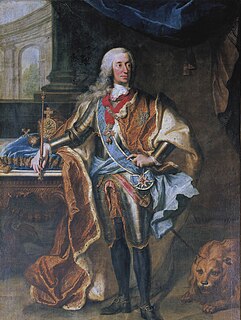
Charles VII was the prince-elector of Bavaria from 1726 and Holy Roman Emperor from 24 January 1742 to his death. He was a member of the House of Wittelsbach, and his reign as Holy Roman Emperor thus marked the end of three centuries of uninterrupted Habsburg imperial rule although he was related to the Habsburgs by both blood and marriage. After the death of emperor Charles VI in 1740, he claimed the Archduchy of Austria by his marriage to Maria Amalia of Austria, the niece of Charles VI, and was briefly, from 1741 to 1743, as Charles III King of Bohemia. In 1742, he was elected emperor of the Holy Roman Empire as Charles VII and ruled until his death three years later.

Franz Joseph I or Francis Joseph I was Emperor of Austria, King of Hungary, and the other states of the Austro-Hungarian Empire from 2 December 1848 until his death. From 1 May 1850 to 24 August 1866 he was also President of the German Confederation. He was the longest-reigning ruler of the Austro-Hungarian Empire, as well as the longest-reigning emperor and sixth-longest-reigning monarch of any country in history.

Otto von Habsburg, was the last crown prince of Austria-Hungary from 1916 until the dissolution of the empire in November 1918. In 1922, he became the pretender to the former thrones, head of the House of Habsburg-Lorraine, and sovereign of the Order of the Golden Fleece upon the death of his father. He resigned as Sovereign of the Golden Fleece in 2000 and as head of the Imperial House in 2007.
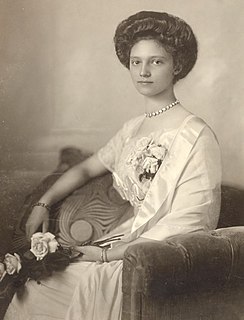
Zita of Bourbon-Parma was the wife of Charles, the last monarch of Austria-Hungary. As such, she was the last Empress of Austria and Queen of Hungary, in addition to other titles. She is venerated in the Catholic Church, having been declared Servant of God by Pope Benedict XVI.

Charles I or Karl I was Emperor of Austria, King of Hungary, King of Croatia, King of Bohemia, and the last of the monarchs belonging to the House of Habsburg-Lorraine to rule over Austria-Hungary. The son of Archduke Otto of Austria and Princess Maria Josepha of Saxony, Charles became heir presumptive of Emperor Franz Joseph after his uncle Archduke Franz Ferdinand of Austria was assassinated in 1914. In 1911, he married Princess Zita of Bourbon-Parma. He is venerated in the Catholic Church, having been Beatified by Pope John Paul II on 3 October 2004, and is known to the Catholic Church as Blessed Karl of Austria.

Rudolf, Crown Prince of Austria was the only son and third child of Emperor Franz Joseph I of Austria and Duchess Elisabeth in Bavaria. He was heir apparent to the imperial throne of the Austro-Hungarian Empire from birth. In 1889, he died in a suicide pact with his mistress Mary Vetsera at the Mayerling hunting lodge. The ensuing scandal made international headlines.

The Emperor of Austria was the ruler of the Austrian Empire and later the Austro-Hungarian Empire. A hereditary imperial title and office proclaimed in 1804 by Holy Roman Emperor Francis II, a member of the House of Habsburg-Lorraine, and continually held by him and his heirs until Charles I relinquished power in 1918.
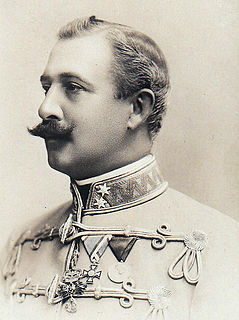
Archduke Otto Franz Joseph Karl Ludwig Maria of Austria was the second son of Archduke Karl Ludwig of Austria and his second wife, Princess Maria Annunciata of Bourbon-Two Sicilies. He was the father of Charles I of Austria, the final Emperor of Austria.

Artstetten Castle is a château near the Wachau valley in Lower Austria, in the community of Artstetten-Pöbring.
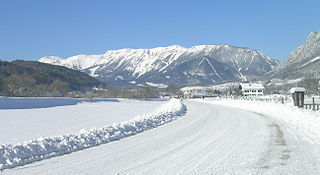
The Rax is a mountain range in the Northern Limestone Alps on the border of the Austrian federal provinces of Lower Austria and Styria. Its highest peak is the Heukuppe. The Rax, together with the nearby Schneeberg, are a traditional mountaineering and mountain walking area, and are called the Wiener Hausberge. They are separated by the deep Höllental.

Nathaniel Meyer von Rothschild was a member of the Rothschild banking family of Austria, known as art collector and patron.

Reichenau an der Rax is a market town in the Austrian state of Lower Austria, situated at the foot of the Rax mountain range on the Schwarza river, a headstream of the Leitha.
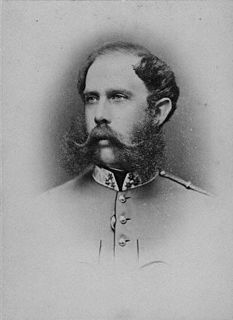
Archduke Karl Ludwig Josef Maria of Austria was the younger brother of both Franz Joseph I of Austria and Maximilian I of Mexico, and the father of Archduke Franz Ferdinand of Austria (1863–1914), whose assassination ignited World War I. His grandson was the last emperor of Austria, Charles I.

Ambras Castle is a Renaissance castle and palace located in the hills above Innsbruck, Austria. Ambras Castle is 632 metres (2,073 ft) above sea level. Considered one of the most popular tourist attractions of the Tyrol, Ambras Castle was built in the 16th century on the spot of an earlier 10th-century castle, which became the seat of power for the Counts of Andechs. The cultural and historical importance of the castle is closely connected with Archduke Ferdinand II (1529–1595) and served as his family's residence from 1567 to 1595. Ferdinand was one of history's most prominent collectors of art. The princely sovereign of Tyrol, son of Emperor Ferdinand I, ordered that the medieval fortress at Ambras be turned into a Renaissance castle as a gift for his wife Philippine Welser. The cultured humanist from the House of Habsburg accommodated his world-famous collections in a museum: the collections, still in the Lower Castle built specifically for that museum's purpose, make Castle Ambras Innsbruck one of the oldest museums in the world.

Archduke Ludwig Viktor Joseph Anton of Austria was the youngest child of Archduke Franz Karl of Austria and his wife Princess Sophie of Bavaria, and as such was the younger brother of Emperor Franz Joseph I. He had a military career, as was usual for archdukes, but did not take part in politics. He was openly homosexual and declined to marry princesses who were sought for him. He is well known for his art collection and patronage as well as philanthropy.

Sigmaringen Castle was the princely castle and seat of government for the Princes of Hohenzollern-Sigmaringen. Situated in the Swabian Alb region of Baden-Württemberg, Germany, this castle dominates the skyline of the town of Sigmaringen. The castle was rebuilt following a fire in 1893, and only the towers of the earlier medieval fortress remain. Schloss Sigmaringen was a family estate of the Swabian Hohenzollern family, a cadet branch of the Hohenzollern family, from which the German Emperors and kings of Prussia came. During the closing months of World War II, Schloss Sigmaringen was briefly the seat of the Vichy French Government after France was liberated by the Allies. The castle and museums may be visited throughout the year, but only on guided tours. It is still owned by the Hohenzollern-Sigmaringen family, although they no longer reside there.

Archduke Charles Stephen Eugene Viktor Felix Maria of Austria was a member of the House of Habsburg, a Grand Admiral in the Austro-Hungarian Navy and candidate for the Polish crown.

Archduke Maximilian of Austria was a member of the House of Habsburg and the younger brother of the Emperor Charles I of Austria.

The Austrian Imperial Order of the Iron Crown was one of the highest orders of merit of Austria and Austria-Hungary until 1918.

The Heimatstil is an architectural style of the second half of the nineteenth century and the first half of the twentieth referring to the historicist tendencies which one encounters in the German-speaking countries, including Switzerland, but also in Victorian England and even in the north and eastern parts of France, as well as Belgium and Flanders. The Heimatstil is characterized by the use of wood on the façade and sculpted beams, connected by protruding or rusticated stone, recalling the illustrations from literature and folklore, especially Germanic ones, from the time period.